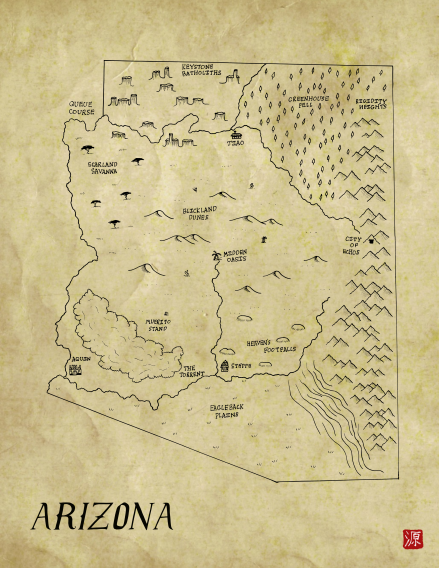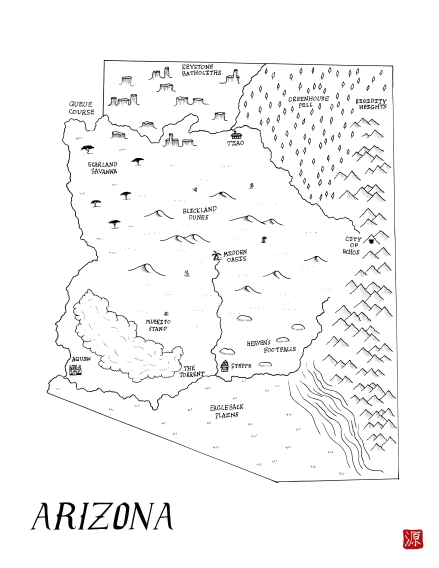Arizona
By 2000 BCE, peoples in Arizona had begun to farm early varieties of corn. Over the following two thousand years, the Ancestral Puebloans, Mogollon, Hopi, and Hohokam all rose to prominence. The Hohokam (a name assigned by archeologists and which is a Piman term that means “all used up”) flourished despite the harshness of the Sonoran Desert because of their large-scale irrigation networks. A canal network near Phoenix was one of the most complex in ancient North America and supplies water to the city to this day. The Hohokam also established large marketplaces as evidenced by archeological sites like Snaketown. The site is 250 acres and there is evidence of farmland and smaller settlements around the site as well as seven miles of canals providing water to some 70,000 acres of land. The word Arizona likely comes from a corruption of “ali sonak”, which means “small spring” the O’odham language.

